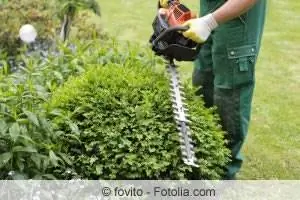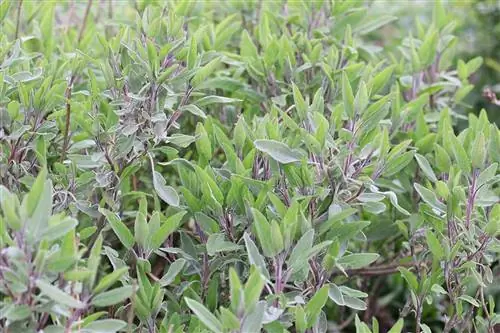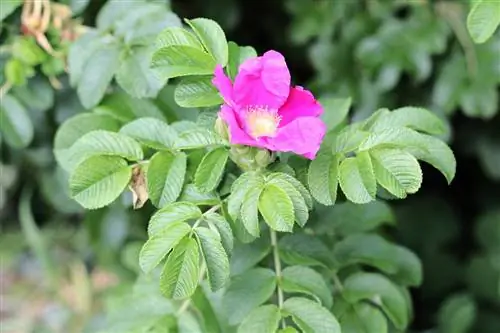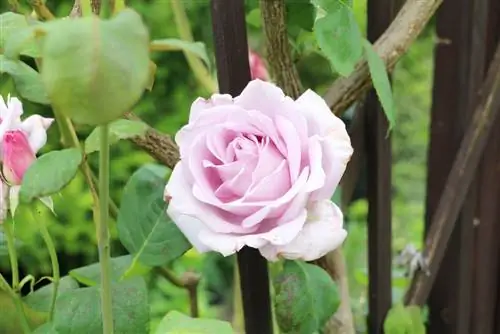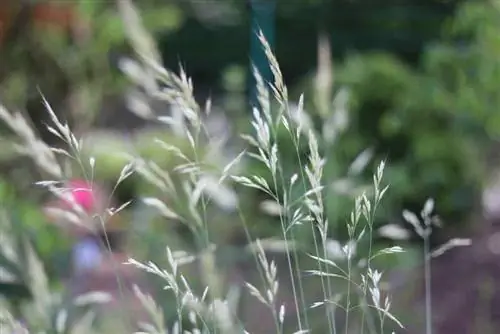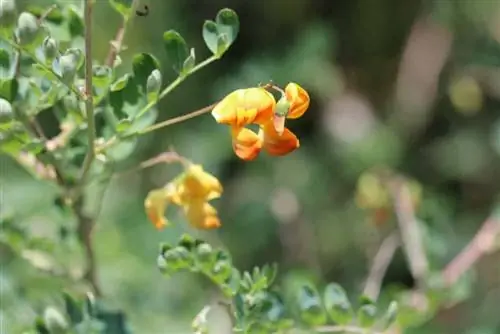- Author admin [email protected].
- Public 2023-12-17 03:39.
- Last modified 2025-01-24 12:45.
The common boxwood (bot. Buxus sempervirens) can be divided into more than 60 different types of boxwood. One of the most popular among them is the box variety Buxus sempervirens arborescens, which is not only particularly beautiful but also extremely easy to care for. However, there are some aspects that should definitely be taken into account when planting, caring for and, above all, cutting Buxus sempervirens arborescens. You can find out what these are in detail here.
The boxwood variety Buxus sempervirens arborescens stands out from other varieties primarily because it is extremely resistant to cutting and can survive even the harshest winters with icy cold temperatures without any damage, without having to take any special winter protection measures. In addition, Buxus sempervirens arborescens grows particularly densely. In addition, the box tree Buxus sempervirens arborescens proves to be very frugal when it comes to its demands on its location. Consequently, the possible uses, which only Buxus sempervirens arborescens offers in this form, appear to be almost limitless.
Usage
Due to the outstanding features presented previously, there are several possible uses. For example, Buxus sempervirens arborescens can be used individually as a grave plant, planted in a row as a decorative bed border or as a meter-high privacy screen. In addition, the boxwood variety Buxus sempervirens arborescens is ideal as a beautifully trimmed ornamental plant in the front garden due to its excellent cutting properties. It should be noted that Buxus sempervirens arborescens can also thrive wonderfully in pots and is therefore also ideal for decorating the terrace or balcony.
Location
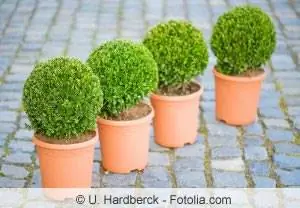
Buxus sempervirens arborescens is one of the box varieties that prefer a sunny to partially shaded location, but can also be safely planted in both shady and sunny locations. The only important thing is that the soil is very nutrient-rich and has a certain lime content. Accordingly, in the case of very sandy and/or lime-poor soils, it may be advisable to improve them accordingly before planting Buxus sempervirens arborescens. With regard to nutrient enrichment, it must be pointed out that only purely organic fertilizer may be used for this purpose. It is also recommended to enrich the soil with mature compost, humus and so-called horn shavings. Apart from that, the soil should not be too moist, which is why experts expressly advise against watering Buxus sempervirens arborescens too frequently. The reason for this is, on the one hand, that the box roots could become too weak if Buxus sempervirens arborescens is watered regularly. On the other hand, there is a risk that too many nutrients will be washed out of the soil due to excessive watering.
Planting spacing
The distance that should be maintained between the individual plants when planting Buxus sempervirens arborescens depends, on the one hand, on the intended use and, on the other hand, on the size that the plants should reach. For example, for a bed border that is around 10 to 15 cm high, a good 8 to 10 box trees can be planted per linear meter, whereas for a 50 to 60 cm high hedge, only 2 to a maximum of 3 box trees should be planted. It should also be mentioned that Buxus sempervirens arborescens can reach a growth width of a good 4 meters, so a correspondingly large distance from adjacent buildings, fences, walls and/or paths should be maintained unless the boxwood is to be trimmed.
Plants
Buxus sempervirens arborescens can be planted all year round. The only basic requirement is that the ground is still completely frost-free on the day of planting and that no severe ground frost has been reported for the following days. Although Buxus sempervirens arborescens could be planted even in winter, it is advisable to plant it in spring, at least in the case of particularly delicate young plants, so that the young plants have a full growing season to optimally prepare for the coming winter. Of course, Buxus sempervirens arborescens can also be planted in midsummer instead. However, the young plants then have to be watered more, which can lead to insufficient root formation.
Care
Buxus sempervirens arbores does not need to be particularly cared for in order to thrive optimally. Unless you want the boxwood to grow in a desired shape and need to be cut accordingly.
Cutting
Smaller boxwoods can actually be cut all year round. However, it should be mentioned that boxwood is an important foraging or forage plant for bees, which is why Buxus sempervirens arbores should only be cut after the main flowering period from March to April. For larger trees that could serve as nesting places for birds, the main pruning should even be waited until August. It should be noted that if Buxus sempervirens arbores were to be cut back extensively after August, the regrowing shoots could be too tender to survive the winter. Subtle thinning or trimming of individual branches is also possible without any problems in autumn or even winter.
Propagate
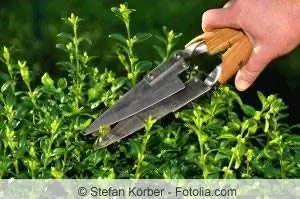
Of course, Buxus sempervirens arborescens can be sown easily, but given the expected growth of 10 to 30 cm per year, this would be a very time-consuming undertaking. It is therefore advisable to propagate Buxus sempervirens arborescens using cuttings. It is worth mentioning that the cuttings should be taken from plants that are as strong as possible and have particularly beautiful growth. It is also important to ensure that the cuttings are at least 10 cm long. The ideal period for cutting the cuttings is between September and March. The cuttings could actually be cut much later. However, since it can take several months until the cuttings have formed sufficiently strong roots, they could only be planted in the garden late the following year after cutting, which is not advisable for the reasons mentioned above.
Frequently asked questions
Recently I discovered whitish deposits in the pot of my boxwood that are a bit reminiscent of lint or small flakes. When I then pulled the bucket towards me to inspect it more closely, more flakes came trickling out of the box. Can you tell me where these come from and what I can do about them?
In all likelihood, the so-called boxwood flea is responsible for the deposits you describe. With a lighter infestation, you usually just have to be patient until the fleas disappear on their own. To avoid spreading, you should quarantine the infected boxwood as a precaution. However, if the infestation is now more severe, you may have to drive away the little pests with a little diluted soft soap.
Do I have to bring boxwoods that are not in the garden but in pots into the house over the winter?
No, you don't necessarily have to take your boxwood trees indoors to overwinter, as long as their containers hold enough soil to protect the boxroots from excessive cold.
Origin
Buxus sempervirens originally comes from the Mediterranean and Asia, where it can easily reach a height of 8 m. In the climate of Central Europe it usually only reaches the height of a bush, so it is ideal for bordering beds. In Europe, Buxus sempervirens is mainly used for artistic garden design. Many historic castle gardens are equipped with box trees that have been cut into imaginative plant figures.
Buxus sempervirens is particularly suitable for artistic garden design. Since it is densely covered with small leaves, it creates a harmonious appearance, and the low growth rate ensures that it retains the selected cut shape for a long time without the need for frequent trimming. Gardens can be designed in different ways with Buxus sempervirens. If you only let it grow a few centimeters high, it is ideal as a bed border. Planted in pots, you can cut wonderful, imaginative figures out of the boxwood. But even if you let it grow, the Buxus sempervirens shows its advantages. Over the years, the small tree grows into a stately tree that has an unusual shape and provides shade all year round.

